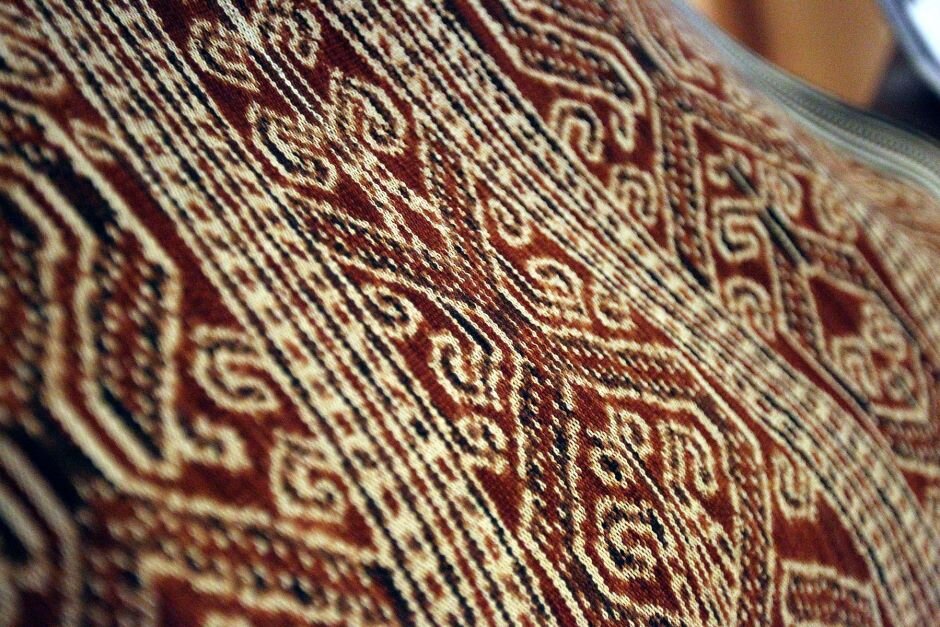Iban Pua Kumbu Weaving, Malaysia
The culture and spirituality of the Iban people is interwoven with the natural environment of Borneo, an island the Iban have inhabited for many generations. While certain tribal practices such as headhunting have disappeared, many Iban communities living in the modern-day Malaysian state of Sarawak and elsewhere continue to speak their own language, live in communal rumah panjai longhouses, and practice the ritual of weaving. Pua kumbu is the woven textile most readily associated with the Iban. Made using a combination of ikat dyeing and backstrap loom weaving, pua kumbu is unique in its use of fibres and dyes that are endemic to the jungles of Borneo.
Mordant dyeing is highly ritualised in Iban society and the finished textiles – with their figurative motifs – are used to convey moral and spiritual teachings. Because of this, both the process and the finished pua kumbu cloth are among the Iban’s most cherished cultural practices. Pua kumbu is traced back to an elaborate origin story that has been handed down through Iban folklore. The process of creating cloth is considered the women’s ‘warpath’ and an expression of cultural identity. Today, where pua kumbu weaving is still practiced, it is often done on looms set against the extended walls of the longhouse.
The Story of the Master Weaver of Pua Kumbu in Sarawak by Borneo B
Iban terminology has evolved to cover all aspects of pua kumbu: First, cotton is harvested from the local taya plant and put through a pemigi (gin) to extract its fibres. It is then spun on a simple wheel (gasing) before base dyeing occurs. Engkudu, engkerbai and tatum plants are combined in different ratios to achieve different hues, mostly rich browns, yellows and reds. An indigo colour is extracted from the rengat plant. The act of mixing mordent baths is known as indu’ takar, indu ngar, and due to cultural taboos, it can only be performed by select women. Dye recipes are guarded secrets and like the patterns they are used to create, they are considered to be the weaver’s intellectual property. Fibres are soaked in cold dyes for up to three days before being washed and dried. Designs are gradually built up through a process of tying (ngebat), unfolding (ngerembai), wrapping (mampul) and dipdyeing the fibres in different colour baths. The final yarns are carefully arranged on a wooden frame before nenun (weaving) commences. Side sections of unfolded yarn are treated differently through the techniques of anak and ara. The main body of the cloth is woven on a backstrap loom, with a crowfeet pattern traditionally used to finish both ends of the textile. Long panels of cloth are used during Iban rituals and can also be fashioned into ceremonial garments. Examples of heritage pua kumbu are displayed at the Sarawak Textile Museum and in the Tun Jugah Foundation’s private collection, both in Kuching. Tun Jugah doubles as a teaching and studio space for students and artisans who still practice the art of pua kumbu weaving. Watch an interview with an Iban weaver from Rumah Gareh. Cover photo by The Star Online.

